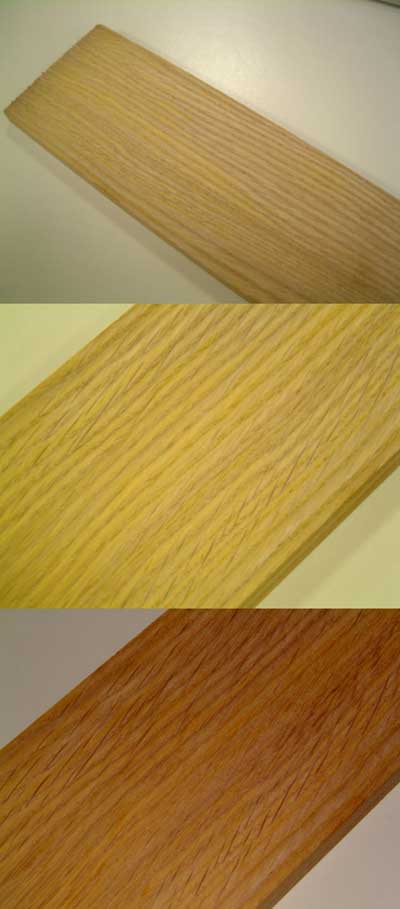Question
We are lumber importers specializing in oak (European oak and US white oak). All of the European lumber arrives fresh sawn and we dry it ourselves. Thicker stuff (6/4" and up) goes into classical low temperature (40-50° C) convection kilns. 4/4 and 5/4 goes into higher temperature (80° C) kilns with forced ventilation (Bollman - Germany).
On several occasions we've had problems with a pronounced yellow discoloration that goes deep into the grain and does not disappear with planing. We cannot find a constant factor in the different cases. All thicknesses are involved. Although we find it mostly in European oak, I have seen it in American white oak, too (backing boards). It happens in both of the kiln types. The affected wood comes from different sawmills. There are no similarities to be found in the conditions before kiln drying (under covered shed; in open air) or during kiln drying. There are no problems during the drying cycles. Some bundles have it, others do not.
This is quite a mystery to us. Here is a picture of the discoloration.

Forum Responses
When I was at Virginia Tech, we had this stain analyzed and it turned out to be a precursor involved with lignin. So, it seems to be related to the tree and something to do with its growth, growth stress, or whatever. As such, control is beyond the kiln operator.
Gene Wengert, forum technical advisor
The fungi like high surface MC and it commonly occurs around stickers. The problem increases with low air speed and the use of thin stickers (less then 15 mm or 3/5’). The fungi survive in temperatures up to 50°C (122°F) and may thereby survive the early stages of conventional kiln drying. It sometimes occurs during air-drying and might thereby develop during storage and transportation prior to the kiln drying.
A way to diminish the problem is to increase the air speed and ensure an even distribution of the airflow through the kiln load. It is also possible, but not recommendable to use chemical treatments. In some cases, e.g. thick European oak, it might even be economical to shift technology in to vacuum drying to avoid this and other problems.